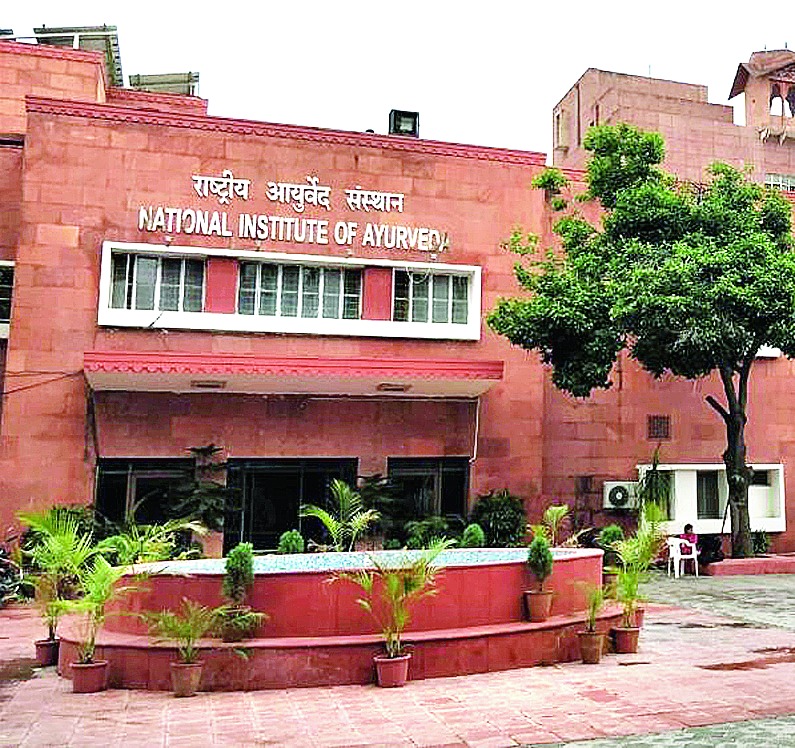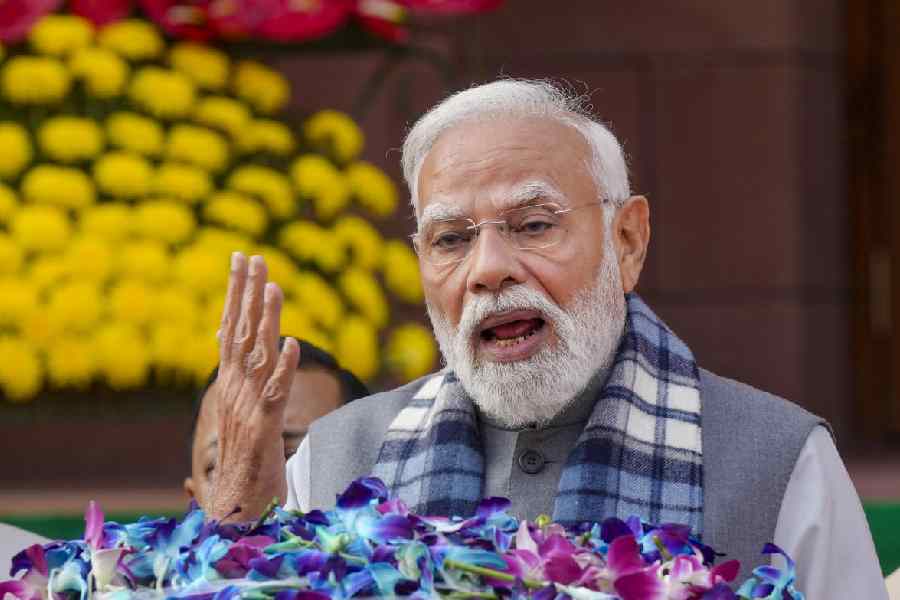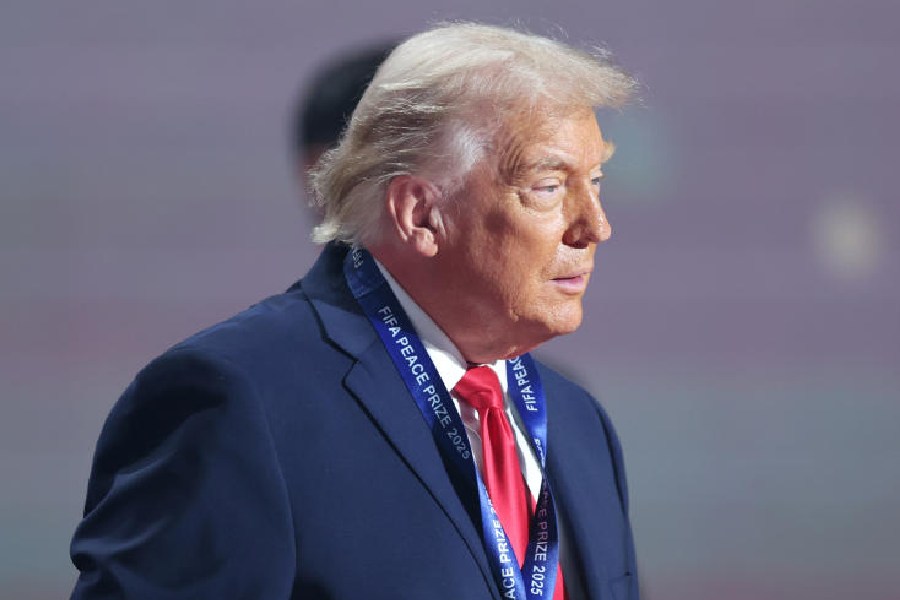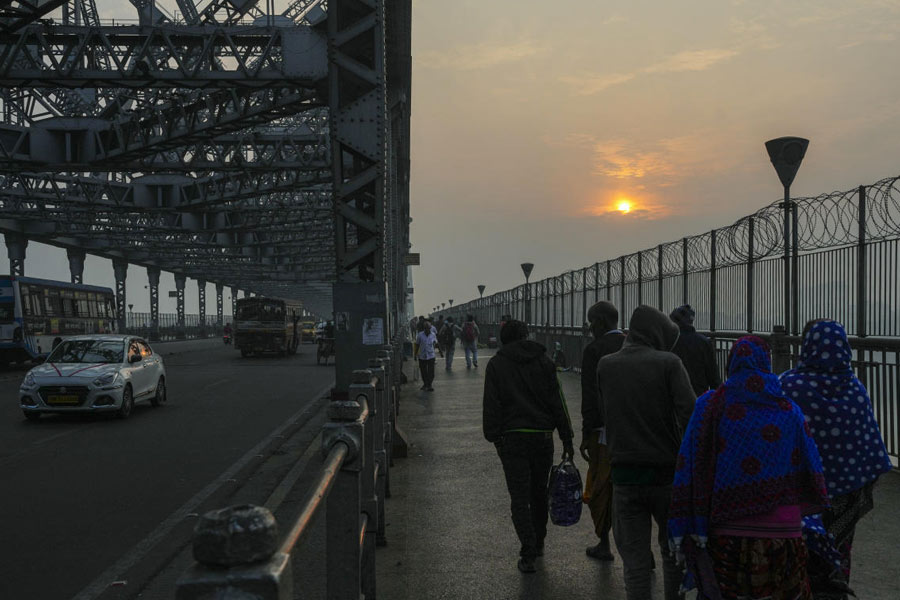
In his spirited campaign speeches during the Karnataka assembly election, the prime minister, Narendra Modi, quipped that soon the Congress would be reduced to three Ps: Punjab, Puducherry and Parivar.
From 8am to about 1pm on May 15, as the counting of votes was underway, it seemed that his prognosis was coming true. The Congress appeared to be crashing to an ignominious defeat in its strongest bastion - down from 122 seats in 2013 to 78 in a House of 224 (elections to two seats are still to be held). The tally would have been worse had it not salvaged its reputation in Bengaluru city which, ironically, witnessed the lowest turnout in the state. Worse, the incumbent chief minister, P.C. Siddaramaiah, the man touted as the subaltern hero who would usher in a new era of strong regional leaders in the ailing party, ended up personally humiliated - losing horribly in one seat and squeaking through with a very narrow margin in the other. Apart from the fact that its vote share rose from 36.6 per cent to 38 per cent, the election outcome didn't bring any cheer to a party that - after the 'moral victory' in the Gujarat assembly election earlier this year - had hoped the Karnataka election would be the beginning of a spirited fightback that would culminate in the general election of 2019.
Of course, if the members of the legislative assembly stay loyal and there is no Constitutional subterfuge, it is expected that the Congress will continue to enjoy political power in Karnataka. However, by surrendering completely to the ambitions of the Janata Dal (Secular) owners - the H.D. Deve Gowda family - the Congress has attempted to salvage whatever it can from the political debris.
The proposed JD(S)-led government - another inverted pyramid experiment where the larger party takes a backseat role - led by H.D. Kumaraswamy will be enthusiastically welcomed by the likes of Mamata Banerjee and other proponents of the federal front. If the leader of the third party can become chief minister because otherwise no government formation is possible and the larger second party can be made to assume a less prominent role, it follows that the national political ambitions of regional leaders can be kept alive. More important, since the Bharatiya Janata Party and the Congress are in direct competition in only 150 or so Lok Sabha seats, it follows that all the constituent leaders of the proposed federal front believe they are in with a chance in 2019.
Whether the Congress can swallow its pride and abjure what it regards as its natural leadership of all the anti-BJP parties is still an open question. In his press conference at Bengaluru on the penultimate day of the campaign, the Congress president, Rahul Gandhi, did say that claiming the prime minister's post in the event the Congress had the numbers was only natural. This was a matter of fact comment, and not quite an assertion of policy. However, since Modi seized upon this stray remark as evidence of dynastic arrogance, it will become difficult for the Congress to backtrack. Notwithstanding its repeated electoral setbacks, there are just too many senior Congress leaders who are unable to adjust to the party's diminished stature and the fact that Rahul doesn't command the same political authority as the earlier Gandhis.
There is an additional complication. Over the past few years, the Congress has moved from its traditional, slightly stodgy centrist orientation. Today, there are just too many Congress functionaries who are culturally more attuned to the culture of the Democratic Party in the United States of America than to the old, khadi-wearing, Gandhi-topi Congress. The distinguishing facets of this 'new' Congress are an adherence to identity politics and a fanatical, blind hatred of not merely Modi and the BJP but the cultural assumptions of the entire BJP support base. This has prompted a strange convergence between the Congress and sections of the NGO and the far-Left. In its bid to link with contemporary concerns, the Congress appears to have completely disengaged from Middle India, leaving the space wide open for the BJP on the one hand and the regional parties - either linked to the BJP or opposed to it.
In Karnataka, there were three major blunders committed by the Congress.
First, the move to recognize the Lingayats as a separate religion enjoying minority status was governed by the trendy belief that the Hindu faith is made up of self-contained clusters of autonomous beliefs. By this logic, there is a Brahmanical religion that is permanently in conflict with other traditions of different non-Brahmin communities. The reality of interlocking beliefs and social relationships was lost on the Congress 'reformers' (and a non-believer such as Siddaramaiah) intent on assaulting Hindu consolidation that is seen to favour the BJP. Predictably, the move -which, ironically, was lauded by the editorial classes who are part of that echo chamber -backfired horribly. It generated a Lingayat consolidation in favour of the BJP and increased the determination of many Hindu religious groups in the state to defeat the Congress.
It didn't help that Siddaramaiah was simultaneously seen to be prejudiced against the Vokkaligas, the other dominant community in Karnataka. Although this hostility stemmed from his personal feud with the Deve Gowda family, it fitted neatly into the wider perception that the Congress was out to fragment Hindus in Karnataka through radical social engineering and the pampering of minority communities.
Secondly, the Congress believed that the many welfare schemes of the Siddaramaiah government would lead to a consolidation of poor voters in favour of the Congress. This did happen to a certain extent. However, unlike the BJP, which has developed grass roots organizations, the Congress still lacks the institutional apparatus to convert government initiatives into political support.
Finally, the Congress has internalized the media narrative that there is a growing groundswell of hostility against the Modi government. There was insufficient appreciation of the fact that Modi has a support that extends far beyond the bounds of the BJP. The Congress, in fact, planned its campaign without factoring in the Modi factor. All anecdotal evidence suggests that the Congress clearly had the upper hand over the BJP till May 1 when Modi began his campaign rallies. After that the BJP campaign began gathering momentum steadily and climaxed on voting day.
The extent to which Modi played a part in pushing up the BJP's tally is impossible to quantify. Yet, considering that the Congress had banked - and quite rightly - on its welfare programmes taking it past the winning post, Modi's rallies helped the BJP generate countervailing support and, more important, motivate the BJP workers into putting that much extra into the campaign.
The cumulative effect of the Modi campaign is, however, likely to be discounted by his opponents. They are likely to point to the fact that the BJP's seats were higher in 2008 when Modi was nowhere on the scene. Maybe these are factors but it is undeniable that the BJP emerged from being the underdog in the campaign to its position as the single largest party. In a general election, when Modi becomes the main (and, indeed, only) issue, local complications won't be a factor. After the Karnataka poll, Modi remains the front runner for the 2019 general election.










